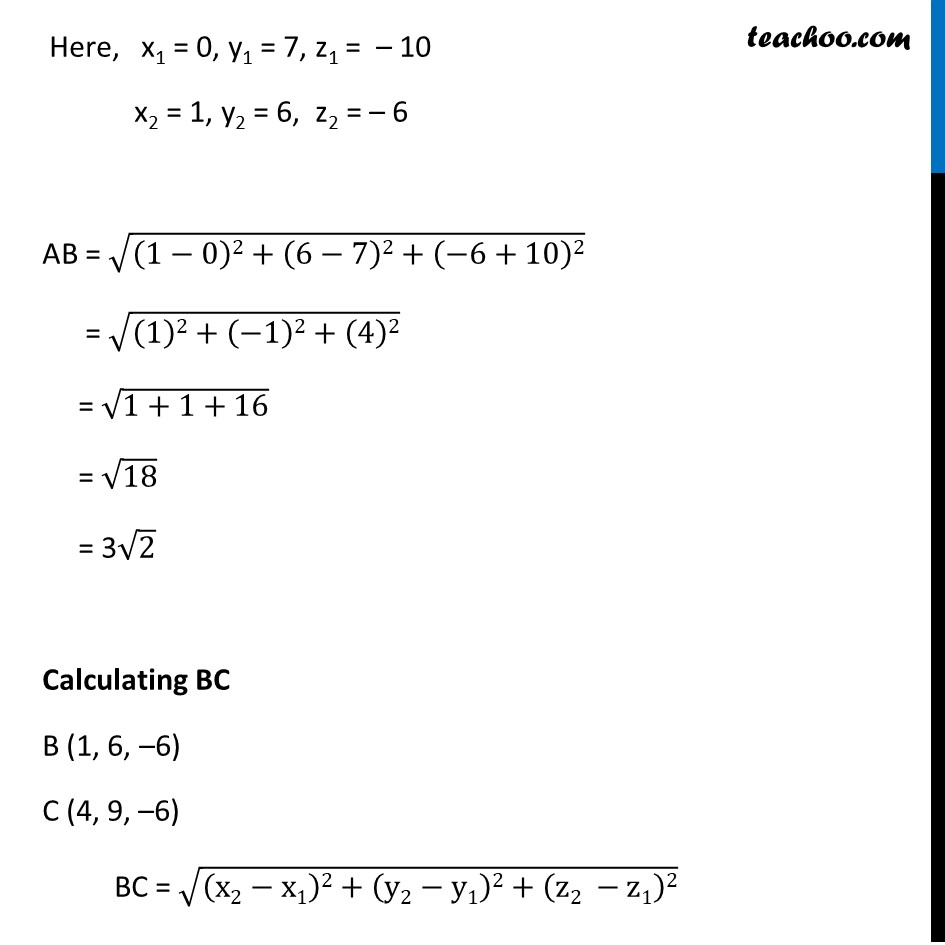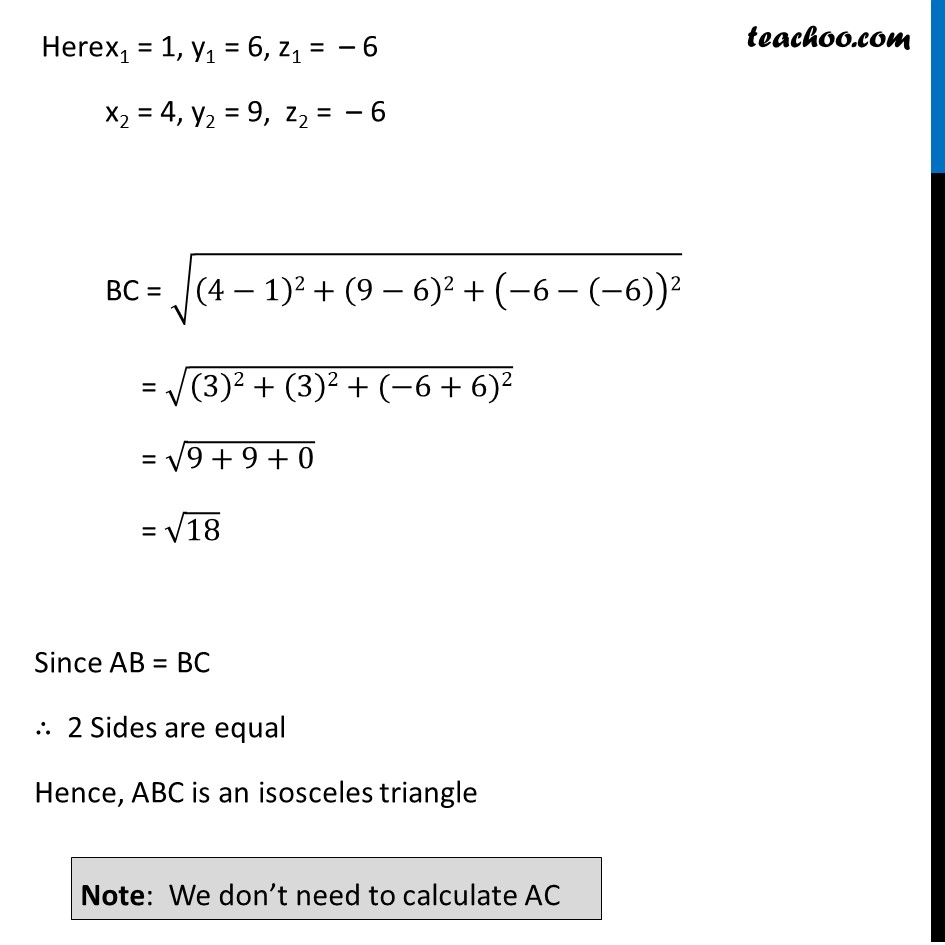


Last updated at Dec. 16, 2024 by Teachoo



Transcript
Ex 11.2, 3 Verify the following: (i) (0, 7, –10), (1, 6, –6) and (4, 9, –6) are the vertices of an isosceles triangle. Let points be A (0, 7, – 10) , B (1, 6, – 6) & C (4, 9, – 6) If any 2 sides are equal, it will be an isosceles triangle Lets calculate AB, BC, AC Calculating AB A (0, 7, – 10) B (1, 6, – 6) AB = √((x2−x1)2+(y2−y1)2+(z2 −z1)2) Here, x1 = 0, y1 = 7, z1 = – 10 x2 = 1, y2 = 6, z2 = – 6 AB = √((1−0)2+(6−7)2+(−6+10)2) = √((1)2+(−1)2+(4)2) = √(1+1+16) = √18 = 3√2 Calculating BC B (1, 6, –6) C (4, 9, –6) BC = √((x2−x1)2+(y2−y1)2+(z2 −z1)2) Here x1 = 1, y1 = 6, z1 = – 6 x2 = 4, y2 = 9, z2 = – 6 BC = √((4−1)2+(9−6)2+(−6−(−6))2) = √((3)2+(3)2+(−6+6)2) = √(9+9+0) = √18 Since AB = BC ∴ 2 Sides are equal Hence, ABC is an isosceles triangle Note: We don’t need to calculate AC